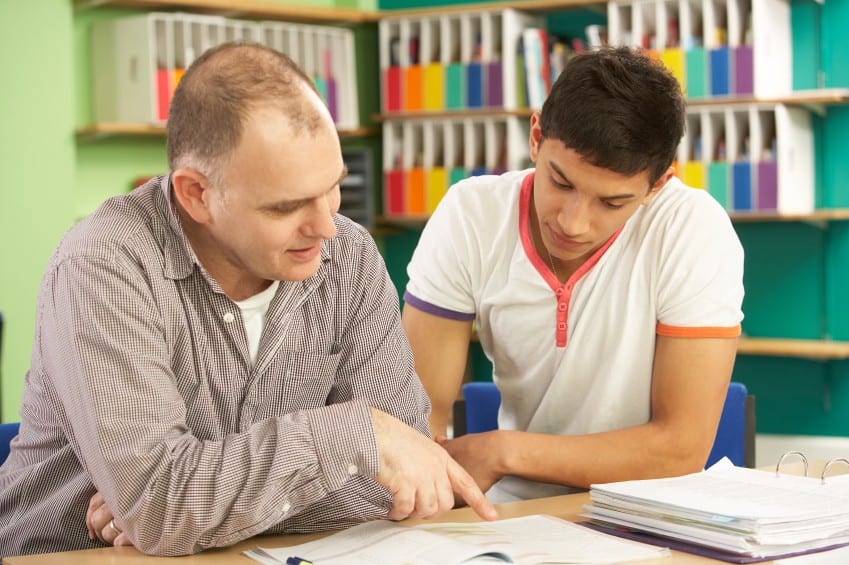Teachers who take on the task of teaching English to refugee children put themselves into a very unique situation, facing challenges that they would probably never be exposed to otherwise.
Unlike the average ESL classroom, this environment demands a variety of special considerations that can have much bigger and more permanent consequences on the individuals concerned.
One major fact to consider is the likelihood that the children have experienced an interruption not only in their lives but also in their education if they had one previously.
It is important to find out as much background information about your students as you can, as assumptions just won’t cut it here.
Never receiving a formal education is a concept that most Westerns cannot truly understand, but it is an unfortunate reality that occurs in many other places in the world. Imagine attending a lesson for the first time- and it’s in a foreign language.
It’s a lot to digest and is certainly high on the list of considerations teachers must make.
$100 OFF Teaching English to Young Learners Course!
Adapting to Educational Background and Setting
Other challenges stem from the changing educational environment, as well, and teachers would do well to note them. As a teacher, one of your main tasks is obviously to teach the language.
However, there is a chance that you’ll have to start from the alphabet and Latin writing system. If you are teaching in a school setting (as opposed to a specific English language institute), there will be even more necessary to try to help them catch up with the curriculum.
Behavioral expectations will need to be explained and, in many cases, this will be the most difficult part of teaching refugees.
Cultural differences, traumatic past experiences, fear, and/or a general unknowing of how to behave in this setting will all be present, and consequences need to be very clearly thought through.
Fights amongst students and outbursts can have quite a significant meaning and must be addressed and dealt with with care.
Read: Teaching Writing to Arab Students
Overcoming Culture Shock
Culture shock is another condition to consider when working with refugee students, and it can emanate from either (or both) side(s) of the dynamic.
Both students and their teachers can experience culture shock, and the effects are often exacerbated in situations where the students’ new environment is so vastly different from that of their home.
This ties back to the cultural experiences and skills that I mentioned above. Picture a situation in which a student has lived through great atrocities and struggles- truly a survivor- but doesn’t know how to color with crayons or sit through a 40-minute lesson.
Situations like this are not few and far between. In fact, they are often even more complex than this article can detail. What strategies can ESL teachers utilize in order to mitigate and deal with such circumstances, creating and ensuring a comfortable learning environment for all of their students?
Overcoming the Challenges
The first emphasis should be on creating an educational space that your students recognize as safe. While the students are trying to adapt to their confusing new environment, your job is to facilitate as smooth of a transition as possible.
Often times, an ESL class is smaller than that of a regular school, allowing each child to receive more attention and form a deeper, more personal bond with their children, which in turn gives teachers the opportunity to take on a special role: one as a mentor and advocate.
This naturally makes the classroom an extremely important place for refugee students, complete with added responsibility (and rewards) for teachers.
You must develop the skills to anticipate potentially unsettling events (such as parties, fire alarms, field trips, and anything outside of routine) and learn to assist students in navigating issues themselves.
A natural way to start is when language frustrations present themselves. The tools that students learn in these scenarios will help them to cope with other issues outside of the classroom, as well.
Read: Teaching English to Children Aged 8-12 Years
In order to adequately support your special-circumstance students, you must train yourself to become an ‘active listener’.
This involves periodically restating what you have heard and interpreted to the speaker. Using expressions like, “Let me see if I understand” and “Do you mean ____?” helps to clarify what the student means and make them feel understood, all while practicing language and comprehension skills.
Furthermore, this presents a great opportunity for students to practice their own listening skills, as well, promoting problem-solving and shared understanding.
While providing a safe haven for learners is at the forefront of the list of responsibilities for an ESL teacher, he/she must also consider the importance of integration.
Teachers must take care to balance the aims of the environment. Integrating into their new society is a challenging, yet critical, part of a refugee child’s life, and classroom standards are a great way to ease the process in a less stressful manner.
While ‘regular’ classrooms facilitate difficulties, such as bullying, the ESL classroom can be utilized as a place to practice inclusion and foster a sense of togetherness.
I’ve found organizing and/or participating in community events to be a great vessel by which to promote integration.
Remember, this process takes time, effort, patience, and compassion, so do not rush or impose; rather, offer support, guidance, and reassurance.





